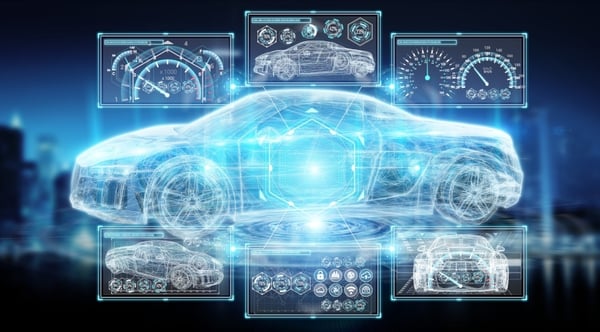
Vehicles are a vital part of modern business. There are hundreds of industries and sub-industries that involve driving to and from customer locations and worksites. Then factor in regional managers who travel from location to location, C-level managers with company cars, driving around visiting clients, and road-based business trips.
There are thousands of company cars on the road every day and it comes as no surprise that an increasing number of businesses are leasing and managing their own vehicle fleets for everything from field service to directly handling client and exec transportation rather than leaving this in the uncertain hands of Ubers and Taxi drivers.Modern vehicle technology is transforming how each and every one of them plays a part in the business world and vehicle technology is what we are here to talk about today. Brace yourself, because there's a lot of it.
Company Vehicle Traditions
Any time a company takes responsibility and ownership (or lease) of a vehicle, certain precautions and requirements fall into place. First, you need one heck of a lot of insurance for both the car's maintenance and repairs and for liability in case the car should accidentally become part of a collision.
Company car insurance is hefty and every incident costs the company, not just the driver. For this reason, and the prominence of staged car accident and personal injury scams, company drivers must have perfect records and be beyond reproach so that when two stories don't match, they can be trusted not to have been in the wrong.
However, all of this is changing with the introduction of new technology in both car accessories and the cars themselves. Let's take a look at how things have changed in the last 10 years and the business tech options available to you to enhance your company vehicle safety, bring down insurance costs, and turn even company driving into data you can analyze and optimize.
The OBD Port
OBD stands for On-Board Diagnostics and every car since 1996 has an OBD II port somewhere around or under the steering wheel. This does exactly what the acronym says it does, it detects what's going on with the car.
If you've never used an OBD port or one of the many software platforms that lets you analyze the data, you might be surprised just how much information can be cleaned from one little port last updated nearly 20 years ago.
But cars know themselves better than you think and by using this port, you can discover things about your drivers that not even they realized. The OBD port, for instance, knows how sharply you turn, how hard you brake, and how quickly you accelerate by slamming your foot on the gas. It can monitor gas mileage, omissions, and all the little things the car has a light for on the dash like engine status
While several insurance companies are starting to use OBD devices to track the potential "risk level" of drivers, you can use the same techniques and dashboards to keep careful track of how your drivers are doing out on the road.
This pairs well with driving records to show which drivers are highly skilled, if a little hard on vehicles, who is careful and steady all the time, and who may actually be driving recklessly.
GPS Vehicle Tracking
GPS is another amazing modern vehicle technology innovation for company vehicles for a large number of reasons. Not only is a GPS transmitter in vehicles the perfect way to never lose your car in a parking lot, it can also be used by businesses to keep exact locational track of where vehicles go, the routes they take, and how long it takes them to get from place to place.
When it comes to analyzing and improving driver performance, you may notice that your best drivers know where the quick shortcuts are or even catch questionable drivers making detours that are not on their route.
GPS also allows you to respond to and interact with the vehicle's location based on the circumstances. A driver who experiences car failure on the road can be sent assistance immediately because you can give the GPS coordinates to your repair and towing service.
For industries involving deliveries or on-location service, you can also use the GPS to give customers a live feed of where your team is and how far out they are from the customer's front door. This has been used to great effect in restaurant deliveries, home repair services, and even pizza venues.
[To be Continued... contact us]








